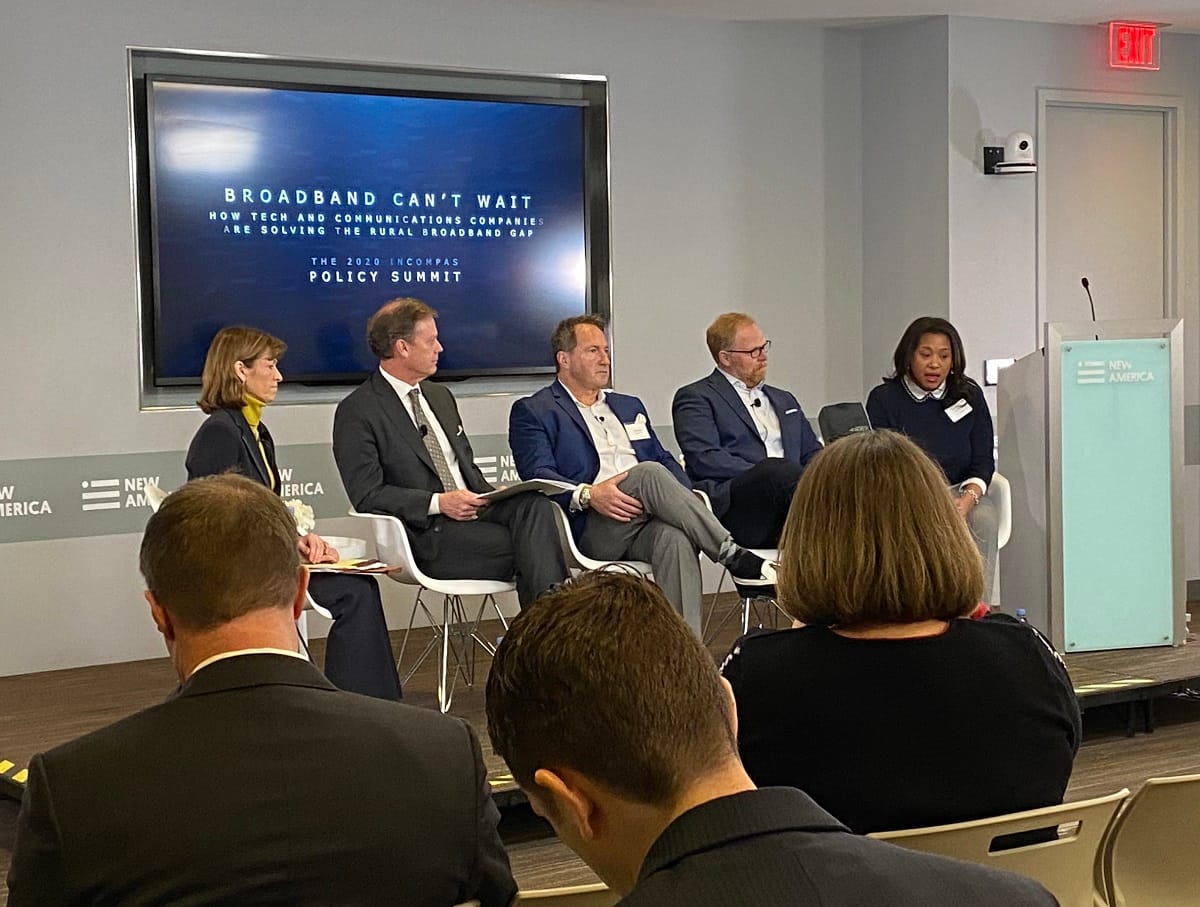In Rural Areas, Private Partnerships Waste No Time in Closing the Digital Divide
WASHINGTON, March 4, 2020 – Private partnerships play a more crucial role in rural broadband buildout than all the federal and public programs available to help, said C Spire Senior Vice President of Strategic Relations Ben Moncrief. He was a speaker on Tuesday at the INCOMPAS policy summit and tout

WASHINGTON, March 4, 2020 – Private partnerships play a more crucial role in rural broadband buildout than all the federal and public programs available to help, said C Spire Senior Vice President of Strategic Relations Ben Moncrief.
He was a speaker on Tuesday at the INCOMPAS policy summit and touted initiatives to deploy broadband in rural communities.
Microsoft Airband U.S. Management Leader Erica Myers said Microsoft is partnering with ISPs and equipment providers to support companies working to close the digital divide.
The Microsoft Airband Initiative began in 2017 and declared efforts to bring broadband to two million rural Americans, said Myers. She also spoke about
the petition filed last week with Federal Communications Commission regarding TV white space technology.
Myers called TV white space a “game changer” because it can cover rural areas in a cost-effective way. One of the obstacles of closing the rural digital divide is the cost to companies who are building out and serving a small population.
Depending on the antenna levels, the signal can also pass through buildings and shrubbery, said Myers.
Moncrief agreed that rural areas face an economic disadvantage. Because small rural communities tend to have a congregated aspect even if the houses are still spread apart, “harvest[ing]” fiber from the highways for the local WISPs can help financially.
In response to a question about the FCC’s Rural Digital Opportunity Fund, Moncrief was hesitant. The program will allocate $20.4 billion to fund rural broadband buildout for millions of homes and businesses.
While it is great that RDOF “favors fiber,” the mapping data it uses is incorrect, said Moncrief.
Moncrief said he is worried that as RDOF takes off, policy will be created from “bad data.”
Myers echoed Moncrief’s sentiment. Bad mapping data limits access to federal and state funding, said Myers.
Moncrief said C Spire has been able to engage in an unlikely, but effective partnership with Alabama Power to spread fiber.
Myers said one issue Microsoft has faced is broadband adoption. “Where the training comes, the adoption follows,” said Myers.
Because rural communities have been living without access, it is important to “make the connection for people and show them how this can improve their lives,” Myers insisted.
Hogan Lovells Partner Michele Farquhar expressed excitement over the recent spectrum auction announcements at the FCC.
Midband spectrum is great for 5G, said Farquhar.








